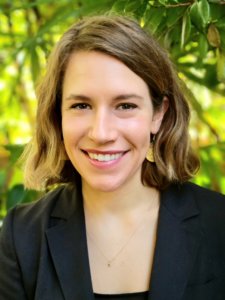Reflections on COP27


It is an understatement to say that attending the United Nations Convention of Parties conference, also known as COP can be an overwhelming and humbling experience. Now in its 27th year, stakeholders gather from every part of the world to try to come to an agreement on the path forward to tackling climate change. Outside of the negotiation rooms where representatives from each nation meet to discuss concepts such as loss and damages, the theme of this year’s COP, the majority of people can be found navigating through the maze of pavilions. These pavilions range from organizations like the World Health Organization and the World Wildlife Fund to different industries highlighting new innovations/technologies, as well as numerous national representatives. There are expert talks from all over the world and it is a feast of information to immerse yourself in with an endless supply of content and perspectives. I was able to listen to Dr. Robert Bullard and Dr. Beverly Wright, founders of the environmental justice movement speak at the Climate Justice Pavilion, listen to the role of women in disaster response and recovery at the Pakistan Pavilion, Indigenous people’s solutions to climate change juxtaposed with US Conservative Climate Caucus perspective. The stakeholders are a diverse representation of the many interests present on this international stage.
One thing that was notably missing from the majority of these discussions was the health implications of climate change. For example, during a discussion for the need of early warning systems in disaster response, health care facilities and first responders were left entirely out of the conversation. Being an emergency medicine physician, I understand that emergency rooms and hospitals are where people end up after a disaster, so this omission was particularly striking. During another talk on India’s solution to air pollution with a green bus initiative, the health effects of air pollution and communities effected were never mentioned. It didn’t seem to click for the panel members until my colleague, Dr. Chekuri, a family medicine physician, directly asked whether health was included in the tally economic and social benefits. Once engaged, the panel had a productive back-and-forth on the substance of the health benefits of these climate interventions.
These are just two of many examples I saw at COP as to why we need clinicians to have a seat at the table when it comes to discussion on climate change. The health voice highlights our collective humanity and should be centered in these discussions. The health of the planet is intrinsic to human health. Our current status of environmental degradation has profound health implication, particularly for historically marginalized communities that are linked to social, economic and political ramifications. Here, is where health professions can step in and help decision makers and negotiators make links and why it is critical that clinicians are present at COP.
I hope that in coming years, more health care professionals take the initiative to educate themselves on climate change and add their voice to this growing movement. Clinicians have the appropriate background to make complex connections between climate change, climate science, geopolitical structures, energy policy and the downstream health and human impacts. We also have a high degree of analytical training that aids in the identification of false solutions and the promotion of policy that puts health of people and planet at its core. After all, every day we see the last stop of the effects of governmental policy in our clinics, ORs and emergency rooms in the patients that we treat and the conditions that they live with. As a health community, this too is our lane and I encourage you to get involved.
About the Author
Kate Weber is an emergency medicine physician and Climate and Health Science Fellow at the University of Colorado. She completed her training at the University of Rochester where she worked to integrate the health effects of climate change into medical school curriculum. Her interests include hospital systems and community adaptation, emergency preparedness as well as state adaptation with a particular focus on vulnerable populations.